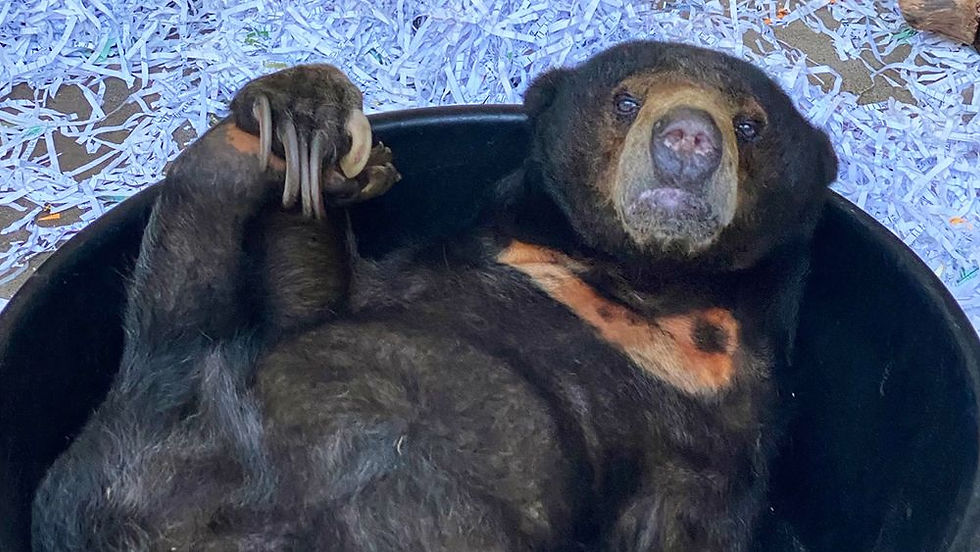Introducing the Fascinating World of Sun Bears
- jothamleewz
- Sep 30, 2023
- 2 min read
Welcome to the enthralling world of sun bears, the smallest and perhaps the most elusive members of the bear family. When it comes to charismatic creatures of the wild, sun bears stand out as one of the most captivating species. These elusive creatures, known for their unique appearance and behaviors, inhabit the dense forests of Southeast Asia and play a crucial role in the intricate web of ecological relationships. In this blog post, we'll embark on a journey to uncover the intriguing world of sun bears as we unveil the ecological marvel of sun bears.
Sun bears, also known as Malayan sun bears (Helarctos malayanus), are the smallest among bear species, making them instantly recognizable. Their most striking feature is the distinctive U-shaped patch of fur on their chest, which varies in color from golden-orange to creamy-white, giving them their name. This patch is often said to resemble the rising sun, hence the moniker "sun bear."

Apart from their chest patch, sun bears have short, sleek black fur covering their bodies, making them well-suited to their forest habitats. Their strong jaws and long, curved claws are impressive adaptations for a diet that includes fruits, insects, and honey.

These bears are not just inhabitants; they are key players in the health of their ecosystems. Sun bears are often regarded as keystone species, meaning their presence or absence significantly affects the biodiversity and structure of their habitat. Their diet, which includes fruits, insects, and honey, contributes to the dispersal of seeds, helping in the regeneration of the forest. This foraging behavior also aids in controlling insect populations, thereby influencing the delicate balance of the ecosystem.
The geographical range of sun bears spans across Southeast Asian countries, including Malaysia, Indonesia, and parts of Thailand, Cambodia, Laos, and Vietnam. Their habitat preference for dense, remote forests positions them as guardians of these vital ecosystems. Through their movements and activities, sun bears contribute to the maintenance of biodiversity and the overall health of the forest.
Despite their ecological significance, sun bears face an uphill battle for survival. Habitat loss due to deforestation and illegal wildlife trade poses severe threats to their populations. Understanding the ecological role of sun bears is paramount to framing effective conservation strategies. Initiatives focusing on preserving their habitats and combating illegal trade are crucial steps toward ensuring the continued ecological balance they bring to their forest homes.
As we delve into the enchanting world of sun bears, I invite you to ponder the interconnectedness of species within ecosystems. In the coming weeks, we'll further explore the behavioral intricacies, conservation efforts, and the urgent need to protect these forests to secure the future of sun bears and the diverse life forms that rely on them. Stay tuned for the next chapter of the ecological saga of sun bears.



Hi, I am Alex and may I know what are some of the unique characteristics that distinguish sun bears from other bear species?